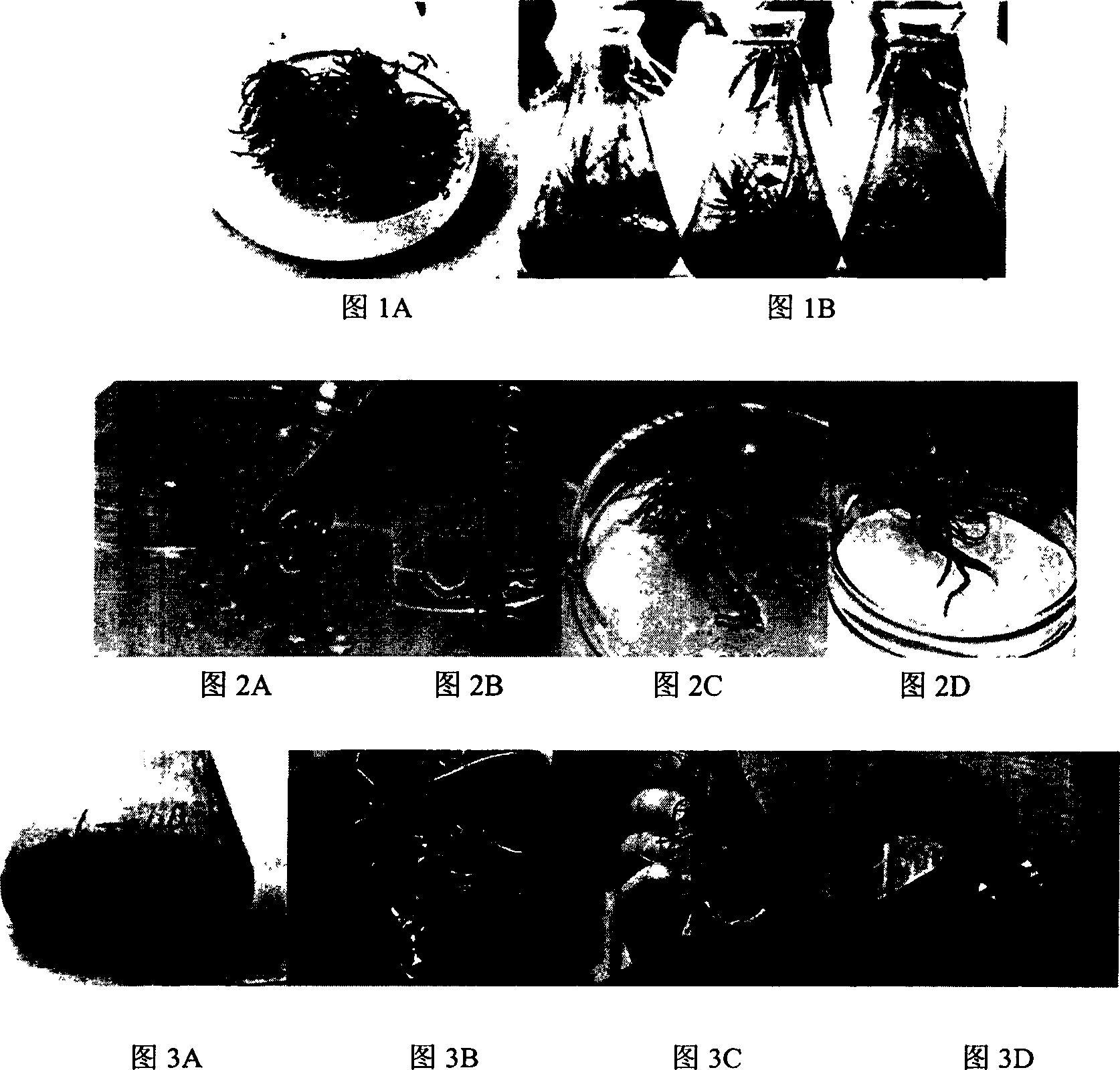Root inductive method for microbody reproduction of Japan dahurian larch
A technology of micropropagation and larch, applied in horticultural methods, botanical equipment and methods, horticulture, etc., can solve the problems of only focusing on scientific problems, low reproduction rate, and no relevant reports on micropropagation of Japanese larch, and achieve Promotes the restoration of juvenile growth characteristics, high reproductive efficiency, and fast reproductive speed
- Summary
- Abstract
- Description
- Claims
- Application Information
AI Technical Summary
Problems solved by technology
Method used
Image
Examples
Embodiment 1
[0029] The clonal plants of Japanese larch were selected, and the one-year-old branches before the buds germinated in early spring were used as materials. After the stem induction was completed, the improved MS medium was selected, and the method of combining variable temperature culture and subculture was used to achieve Root induction of Japanese larch micropropagation; specific operations are as follows:
[0030] 1. Material collection and pretreatment
[0031] The Japanese larch No. 38 clone was selected from the seed garden of Wulong Forest Farm, Fushun County, Liaoning Province. The tree was 10 years old, and the upper branches of the 1-year-old tree crown were collected. The collection time was before the buds germinated in early spring. Brown or dark brown turns into shiny light brown or light brown. Store at 4°C. Take it out and cultivate it in water at room temperature for about two weeks until the buds are bright.
[0032] 2. Medium Preparation
[0033] 1) Prepare...
Embodiment 2
[0046] The difference from Example 1 is:
[0047] Select the 28-year-old Japanese larch clone Chao No. 6 plant, collect the 1-year-old branches with full winter buds in March, and use the adventitious stems with induced elongation greater than 2cm as materials;
[0048] Prepare rooting medium, add appropriate amount of NAA and AC to the improved MS medium, the added concentrations are: NAA 0.3mg / l, AC 1.0g / l;
[0049] Move the Erlenmeyer flask inoculated with adventitious stems in step 4 to 28°C for 5 days at constant temperature and dark light, and then under the condition of light intensity 3,000Lux, subculture for a total of 70 days, with a light-dark cycle of 14 / 10 hours, subculture 3 times, as a result, 5 of the 25 explants took root, and the plant regeneration was completed. Figures 2C and 2D show the regenerated plants in this example, indicating that the rooting induction process can also be completed by using the appropriate concentration of NAA in the present invent...
Embodiment 3
[0051] Carry out the test of embodiment 1 and embodiment 2 repeatedly, and condition is with above-mentioned respectively. Fig. 3A, 3B, 3C, 3D show the result of above-mentioned two embodiment repeated tests, wherein Fig. 3A is the rooting culture medium of present embodiment 1, Fig. 3B and 3C are the verification result of embodiment 1, Fig. 3D is present embodiment 2 verification results.
PUM
 Login to View More
Login to View More Abstract
Description
Claims
Application Information
 Login to View More
Login to View More - R&D
- Intellectual Property
- Life Sciences
- Materials
- Tech Scout
- Unparalleled Data Quality
- Higher Quality Content
- 60% Fewer Hallucinations
Browse by: Latest US Patents, China's latest patents, Technical Efficacy Thesaurus, Application Domain, Technology Topic, Popular Technical Reports.
© 2025 PatSnap. All rights reserved.Legal|Privacy policy|Modern Slavery Act Transparency Statement|Sitemap|About US| Contact US: help@patsnap.com

